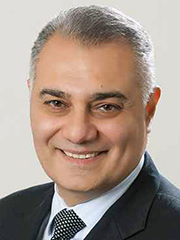The price of innovation: 3 steps for managing specialty drug costs
- Health plans can get a handle on the skyrocketing prices of specialty drugs by offering physicians one-to-one support at the point of care.
- Integrating coordination of pharmacy and medical benefits also has shown the potential to generate significant cost savings.
- Implementing fixed-price models can encourage providers to contain costs, while offering incentives to members can promote medication adherence and keep conditions from progressing to the point where specialty drugs are needed.
The pace of innovation around specialty drugs is accelerating, with “blockbuster drugs” for rheumatoid arthritis, psoriasis, peanut desensitization and more released this year. Although many of these drugs are clinically effective, the continued sharp rise in specialty drug spending is unsustainable — and health plan leaders face immense pressure to find solutions.
Consider Zynteglo (formerly LentiGlobin), an experimental gene therapy designed to treat a rare, inherited blood disease. Its estimated cost in the United States, $1.8 million, is so high, the manufacturer has offered a five-year installment plan for health plans and members. The company is also willing to put 80% of payment at risk: After the first installment, subsequent payments are contingent on the drug’s continued effectiveness. But even with this innovative model, the cost for members is extraordinary and may vary widely based on coverage.

With increased cost comes heightened responsibility to balance need versus expense. Here are three ways health plans can lay the groundwork to contain specialty drug costs.
1. Support plan-to-provider discussions around specialty drug treatment
Health plans should seek ways to offer physicians one-to-one support centered on specialty drug prescribing, especially at the point of care. When physicians seek prior authorization for a specialty drug treatment that may not be clinically indicated for the member, a health plan resource should explain why the treatment may not be the right choice for the member and what alternatives should be considered.
For example, CAR T-cell therapy, which supercharges the immune systems of patients who have rare blood cancers and no longer respond to traditional treatment, works better on some people with blood cancers than others. For this reason, its use is limited to a small number of people who meet clinical guidelines.
2. Integrate coordination of pharmacy and medical benefits
Data analyses reveal the potential for significant cost savings when health plans break down silos between pharmacy and medical benefits management. For example, Aetna discovered that integrating pharmacy and medical benefits management reduces emergency department visits, results in fewer hospitalizations and increases member engagement in care management.
Pairing a health plan’s medical and pharmacy expertise also better positions the plan to ensure specialty drug policies are based on the most current available medical evidence. Given the widespread variation in specialty drug coverage by commercial health plans, developing a shared-knowledge system for specialty drug policy formation and decision making across the enterprise is an important step toward cost containment.
Numerous studies point to the business case for integrating pharmacy and medical benefits, making shared-knowledge systems more viable. Integration of pharmacy and medical benefits also can establish a framework for bundled payments.
3. Implement fixed-price models for specialty drug benefits
Under fixed-price oncology models, for instance, providers receive a predetermined amount to care for an oncology patient for a specific period. The physician then must decide how to apply those dollars to oncology drugs, chemotherapy, radiation or proton beam therapy, and more. When the cost of care exceeds the fixed price, providers agree to absorb the difference. These models require providers and members to carefully weigh the evidence, the patient’s health needs and individual preferences in determining the right course of treatment.
Some plans also are deploying outcomes-based contracts that compensate members financially for medication adherence. One survey found two-thirds of consumers with chronic conditions would be more likely to demonstrate medication adherence if they were rewarded for their efforts. Given that the cost of nonadherence is estimated at up to $289 billion per year, this measure could both contain costs and significantly boost health outcomes.
Collaborative cost containment is vital
Achieving true cost transformation in healthcare isn’t easy. In some instances, efforts to control specialty drug costs could adversely affect relationships between health plans and providers. Yet difficult discussions sometimes are needed to promote adherence to evidence-based guidelines and high-quality service to members.
Developing a collaborative approach to specialty drug cost containment among physicians, members and the health plan is an important step toward supporting value-based models for innovative treatment.





